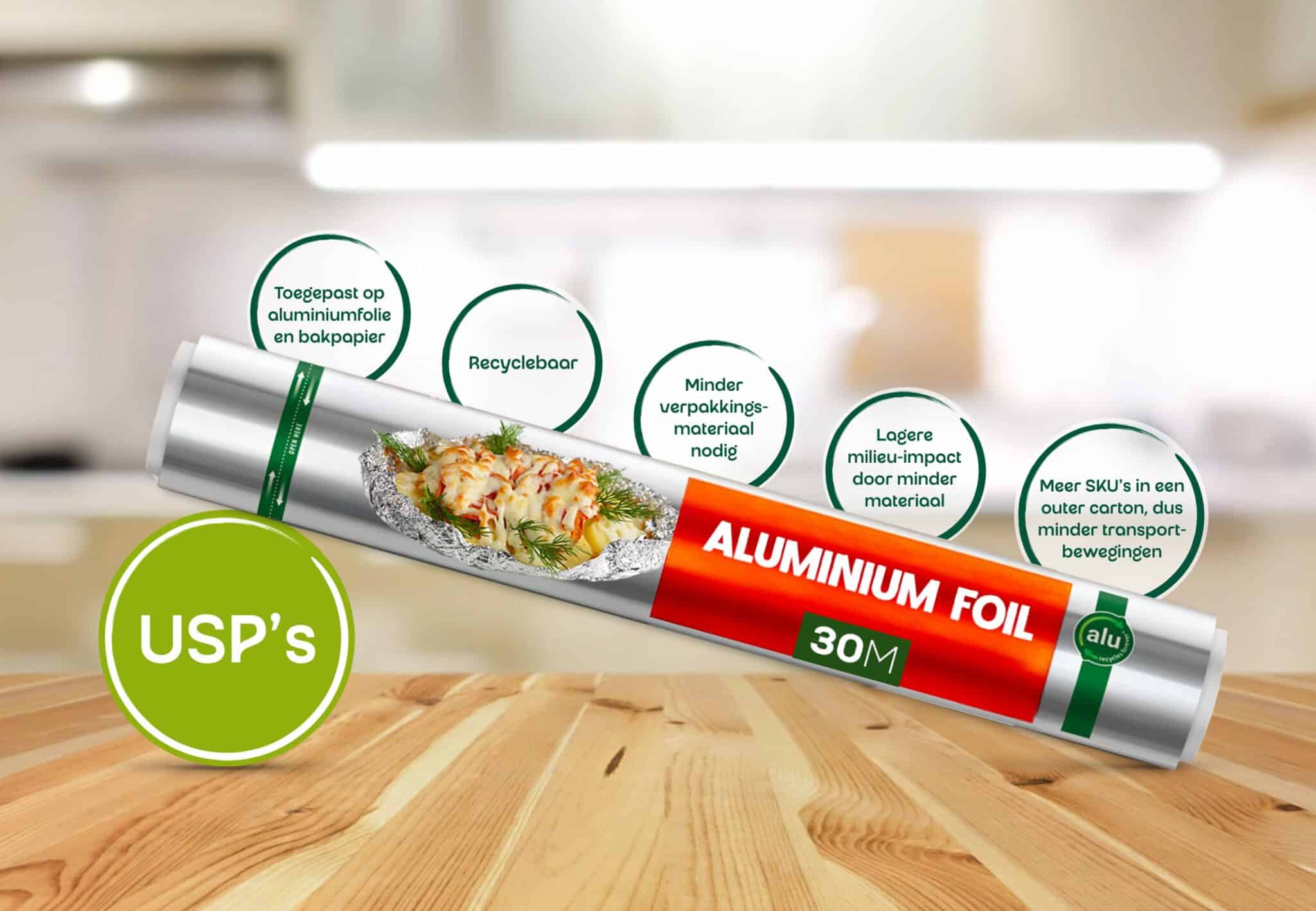
Less packaging material
Packaging as an information carrier
“Packaging tells more than you think. With an insert sheet, we clearly communicate mandatory information and waste separation. But did you know that the rules differ per country? Cindy explains it in this document.”
– Cindy Musters-Artwork Coordinator –
Comparison
The difference in weight also results in a lower CO2 equivalent for shrink film. 21 grams¹ CO2-eq versus 90 grams² CO2-eq for recycled cardboard per roll.
But how do the packages score on other impact factors? Cardboard breaks down faster than plastic and both products are equally recyclable. The production of cardboard requires more water and energy than the production of plastic shrink film.
———————————
¹ 2.4 g (weight shrink film) * (6 kg CO2-eq / 1000 g) = 0.0144 kg CO2-eq or 14.4 g CO2-eq + 1.1g (weight insert sheet) * (6 kg CO2-eq / 1000 g) = 0.0066 kg or 6.6 g CO2-eq = 21 g CO2-eq.
² 15 g (weight box) * (6 kg CO2-eq / 1000 g) = 0.09 kg or 90 g CO2-eq.

